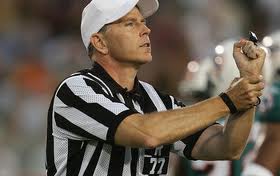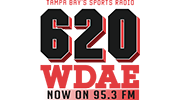Holding Penalty: Citywide Baseball Futures
Establishing balance in a futures market is essential for attracting action on all teams. Unlike a normal supply and demand curve where price rises as demand increases, the opposite is holds true when booking futures; while people are clamoring to bet a team to win the title amid a hot streak or after a major trade, odds drop. When bettors are avoiding certain teams in the market like the plague, you guessed it, bookmakers raise the number until they can entice a bet. The process isn’t nearly as simple as I’ve made it sound of course but it’s not difficult to maintain a highly competitive market when monitoring sports daily.
Every bookmaker responsible for building a market also understands the theoretical hold his shop strives to keep. Theoretical hold is the percentage of every dollar wagered that goes to the house. In terms of futures, market average should range from 25% on the low side to 40% on the high for most major sports. The perfect market requires equal and opposite reactions on both sides of the equation to maintain equilibrium implying that every time a price is dropped, another needs to be raised (think physics that energy can neither be removed or produced without going somewhere). The primary goal for bookmakers is to achieve balance heading into the season so they can make daily adjustments as the balance of power changes.
To visualize the process imagine a balance where you have a large weight on one side and 10 smaller weights on the other. As the standings change, the challenge is steering action towards different commodities (or both sides of the balance) so bettors are able to make a case for not only the prohibitive favorite at 5/2 but also the longshot at 75-1. Those who bet into future markets have different motivations ranging from the casual fan interested in rooting for their team or the professional bettor looking to grab a number that can be hedged in the postseason. As a result of differing objectives, establishing true odds is rare in futures pricing because certain sides regardless of price garner more public attention than others. The Cubs, Packers, Lakers, and Maple Leafs typically offer short odds for just this reason.
There are regulations put in place here in the state of Nevada to protect both bettors and casinos from irregularities and unusual circumstances in sports gambling. However, futures are an area that fall on the shoulders of the bettor to find best price because casinos are not forced to adhere to hold parameters and can book however they deem fit. With so many people planning to make trips to Vegas throughout the summer, I used last week’s baseball numbers to illustrate the huge price differences available across the city. The various sportsbooks in Las Vegas cater to different clientele and you see that reflected in market offerings; from one large center strip property that holds a gouging 54% to a more reputable establishment only collecting 26 cents on the dollar. The differences illustrate how important it is to shop around for prices . When house advantage gets absurdly high, the market becomes price prohibitive and as a former bookmaker turned bettor, it’s not hard to guess where I’d be looking to invest my money given the various options at my disposal
(All future prices are from sportsbook sheets displayed beginning April 8 )
| Stations | MGM | LVH | Caesars | Cantor | Wynn | Boyd | Will Hill | |
| Nationals | 5.5 | 8 | 7 | 5 | 7 | 6 | 5 | 7.5 |
| Angels | 5.5 | 8 | 7 | 5 | 8 | 9 | 4 | 7.5 |
| Dodgers | 5.5 | 8 | 8 | 4 | 8 | 8 | 4 | 7 |
| Tigers | 5 | 6 | 6 | 5 | 7 | 6 | 5 | 6.5 |
| Blue Jays | 9 | 10 | 16 | 4 | 8 | 8 | 7 | 13 |
| Reds | 8 | 6 | 10 | 7 | 7 | 9 | 8 | 10 |
| Yankees | 22 | 15 | 20 | 15 | 25 | 20 | 10 | 25 |
| Giants | 8 | 10 | 12 | 5 | 13 | 12 | 8 | 7 |
| Rangers | 22 | 20 | 20 | 15 | 23 | 11 | 12 | 20 |
| Phillies | 15 | 12 | 25 | 20 | 18 | 28 | 8 | 28 |
| Rays | 16 | 18 | 20 | 16 | 17 | 22 | 15 | 22 |
| Braves | 10 | 12 | 14 | 10 | 12 | 10 | 9 | 10 |
| Cardinals | 15 | 12 | 16 | 10 | 20 | 15 | 15 | 18 |
| Red Sox | 25 | 22 | 25 | 15 | 23 | 20 | 20 | 28 |
| Brewers | 30 | 40 | 60 | 25 | 70 | 85 | 30 | 65 |
| Athletics | 20 | 25 | 25 | 15 | 27 | 15 | 20 | 18 |
| White Sox | 30 | 22 | 40 | 20 | 37 | 50 | 25 | 40 |
| Orioles | 25 | 15 | 20 | 12 | 10 | 24 | 18 | 25 |
| Royals | 50 | 25 | 50 | 15 | 50 | 30 | 30 | 60 |
| Dbacks | 50 | 30 | 40 | 35 | 55 | 35 | 30 | 35 |
| Pirates | 80 | 50 | 75 | 40 | 85 | 75 | 40 | 80 |
| Cubs | 75 | 40 | 70 | 25 | 100 | 100 | 40 | 60 |
| Indians | 40 | 25 | 60 | 25 | 80 | 75 | 30 | 40 |
| Mariners | 60 | 40 | 60 | 40 | 50 | 75 | 60 | 50 |
| Mets | 100 | 50 | 60 | 60 | 80 | 75 | 50 | 50 |
| Twins | 100 | 30 | 100 | 35 | 70 | 125 | 25 | 60 |
| Rockies | 125 | 80 | 100 | 70 | 120 | 100 | 60 | 80 |
| Padres | 80 | 100 | 100 | 60 | 110 | 125 | 60 | 100 |
| Marlins | 250 | 250 | 300 | 200 | 750 | 250 | 70 | 250 |
| Astros | 300 | 250 | 400 | 150 | 750 | 300 | 100 | 400 |
| Hold | 40% | 40% | 26% | 54% | 30% | 33% | 52% | 30% |
Keep in mind, hold % only indicates competitiveness of the overall market. There will be cases when a higher hold market can offer better prices on certain teams but those instances are exceedingly rare. Be a conscientious gambler and do the homework required to be successful in this business long term; we already know how difficult it is to maintain profitability anyways so avoid betting at books that won’t help your bottom line.












